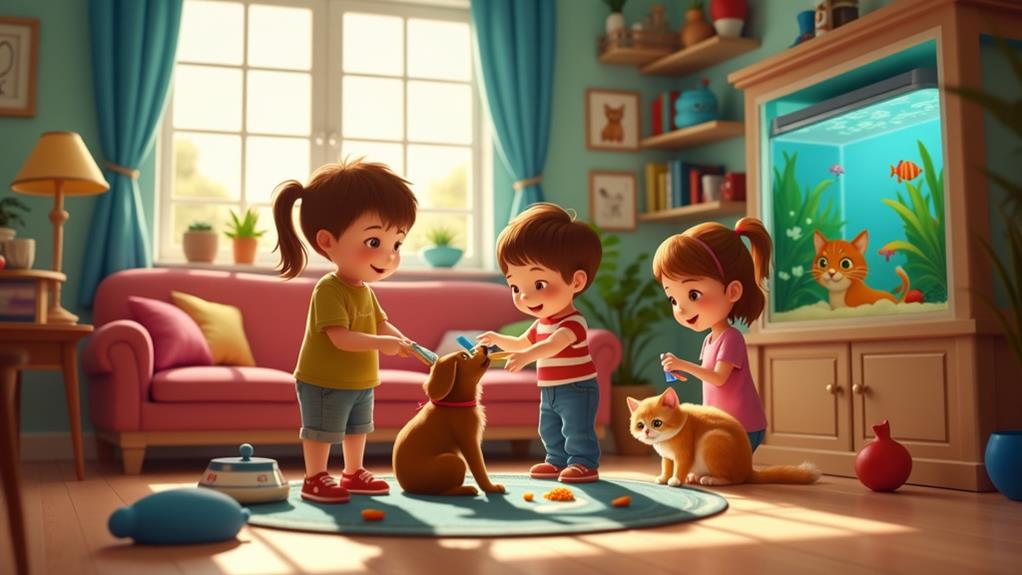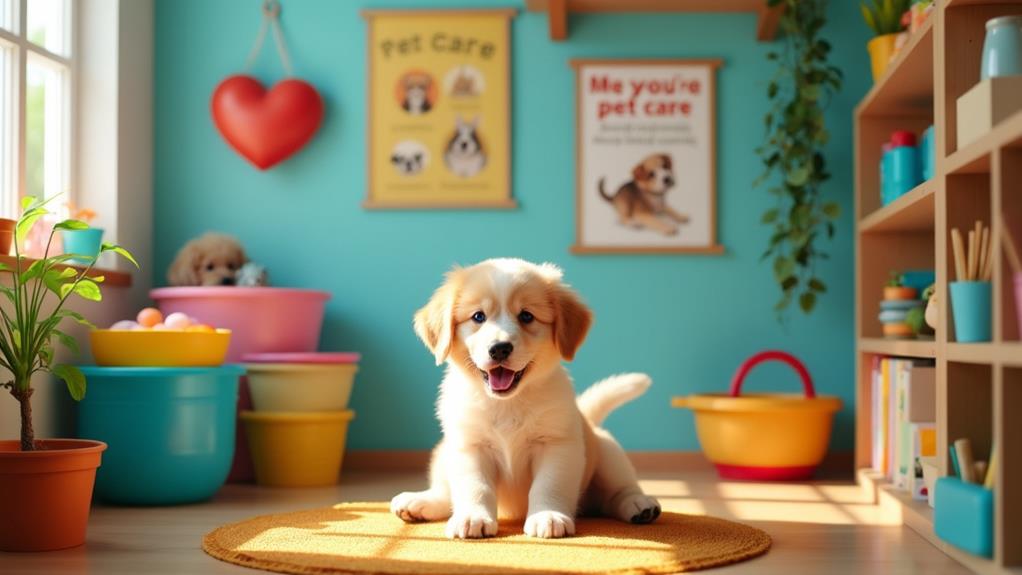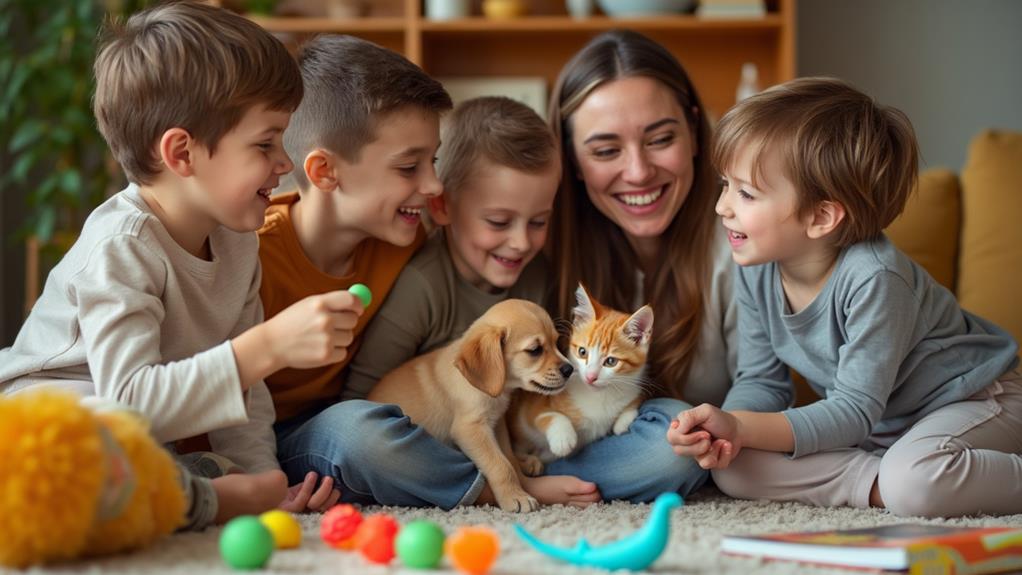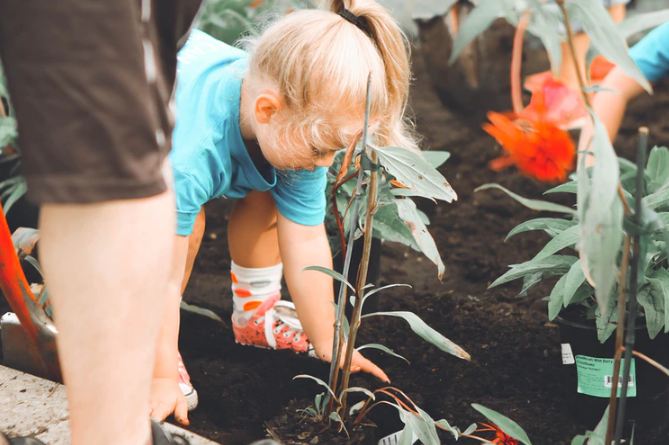How to Make Pet Care Fun and Educational for Kids

Wondering how to make pet care both fun and educational for kids? It's not just about assigning chores; it's about turning each task into a learning experience. Your child can learn empathy and responsibility through feeding and grooming your family pet. Incorporating playful activities and training sessions can deepen their understanding of pet behavior and strengthen their bond. Teaching kids to recognize animal stress signals and respect their pet's personal space creates a safer environment for everyone. Follow these steps to ensure your child thrives in this role and enjoys the process.
Setting the Stage for Success

When preparing children and pets for safe and enjoyable interactions, proper socialization is essential. Start by gradually introducing your children to their new furry friends, ensuring that these initial meetings are positive and calm. Supervised playtime is crucial for teaching kids how to interact gently and respectfully with pets. This controlled environment helps prevent accidents and provides an ideal opportunity for children to learn about pet behavior.
Actively supervise all interactions between children and pets. This is not just about safety; it's an opportunity to teach your kids the responsibilities of pet care. Demonstrate how to handle pets gently and explain why certain actions, like pulling tails or ears, are inappropriate. These moments can be highly educational, fostering empathy and understanding.
Involve children in appropriate pet care tasks to foster a sense of responsibility. Create a structured routine that includes simple tasks like filling the water bowl or brushing the pet. These activities help kids feel involved and responsible, developing important life skills through consistent engagement. By setting the stage for success, you ensure that both your children and pets enjoy a harmonious and loving relationship.
Pet Care Tasks for Kids
Involving your kids in pet care tasks not only keeps your pets healthy but also teaches your children valuable life skills. Start with appropriate tasks like feeding, grooming, and training to foster their sense of responsibility and empathy. By assigning these meaningful duties, you help them build a strong bond with your pets and reinforce their commitment.
Age-Appropriate Pet Chores
Introducing kids to pet care through age-appropriate chores is a fantastic way to foster responsibility and empathy. Assigning suitable tasks helps teach kids about the needs of animals and allows them to learn responsibility while caring for pets.
For younger children under 5, simple tasks like mixing pet food and passing dishes are ideal. These activities encourage early connections with pets and help them understand basic pet needs. Kids aged 6 to 9 can start taking on more significant responsibilities, such as feeding and basic grooming tasks like brushing. These chores are perfect for teaching the importance of daily care routines.
When children reach ages 10 to 13, they are ready for more complex tasks. Cleaning cages and litter boxes, with adult supervision, ensures they grasp the importance of hygiene in pet care. Teens aged 14 and older can handle most pet care responsibilities independently, including feeding, bathing, and training pets. This level of involvement helps them develop a strong sense of accountability and maturity.
Enhancing Responsibility Skills
As children grow and master developmentally appropriate pet chores, enhancing their responsibility skills becomes a natural progression. Start with simple tasks for young children, such as feeding and providing water for the pet. These basic duties foster a sense of accountability, responsibility, and empathy. As they mature, you can introduce more complex responsibilities like walking the dog or grooming the cat.
Regular involvement in pet care, such as cleaning litter boxes or assisting with grooming, teaches kids the importance of hygiene and routine. Participating in training sessions not only enhances their understanding of animal behavior but also builds leadership and communication skills. Encourage your children to engage in these activities to deepen their bond with the pet and comprehend the commitment involved.
Positive reinforcement is essential. Praise or rewards for completing pet care tasks motivate children and reinforce their dedication. This technique ensures they remain engaged and responsible.
Daily Enrichment Activities

Daily enrichment activities are essential for maintaining your pets' happiness and health while offering children valuable learning experiences. These activities teach kids responsibility and the joys of pet care. When pets and children engage in daily enrichment activities together, they form strong bonds and have fun simultaneously.
Starting with backyard excursions can be ideal. Allow your children to guide their pets around the yard, exploring new sights and smells. This promotes physical activity and strengthens their connection. Playtime with the pet's favorite toys not only entertains the animal but also helps kids learn to recognize signs of enjoyment and understand their pet's preferences.
Short training sessions of 2-5 minutes can be very effective. Children can help teach new commands, enhancing both the pet's skills and their understanding of animal behavior. Creative enrichment activities, like DIY puzzle toys or obstacle courses, stimulate pets mentally and encourage children to think critically and creatively about their pet's needs.
Involving kids in these daily tasks fosters a sense of accomplishment and responsibility as they witness the positive impact their efforts have on their pets' well-being.
Benefits of Pet Adoption
When you adopt a pet, you gain not just a furry friend but also a host of benefits for your entire family. Pets provide companionship, reducing feelings of loneliness and improving mental health for both children and adults. They offer emotional support, helping to alleviate stress and anxiety, and provide a comforting presence during challenging times.
Caring for a pet teaches children responsibility and empathy. Tasks like feeding, grooming, and walking a pet help children develop stronger social skills and emotional intelligence, lessons that will benefit them throughout their lives.
Adopting a pet also increases your family's physical activity. Regular walks and playtime mean more exercise for everyone, fostering a healthier lifestyle and strengthening family bonds.
Moreover, by adopting, you help reduce the number of homeless animals in shelters. This act promotes humane treatment and responsible pet ownership, setting a positive example for your children. Adopting a pet is not just a personal gain; it's a contribution to a larger, compassionate cause.
Introducing a New Pet

Bringing a new pet into your home is an exciting time filled with anticipation and joy. To ensure a smooth transition, gradually introduce the new pet to your family. This approach reduces stress for both the pet and your children, fostering a positive environment for everyone. Supervised meetings are crucial, especially if you have small children. These monitored sessions allow safe exploration, helping your pet and child become comfortable with each other.
Teach your kids to recognize and respect the pet's space. Explain how animals need their own area to feel secure. This not only helps prevent accidents but also fosters a healthy relationship between your children and their new furry friend. By understanding key aspects of pet behavior and body language, kids can learn to interpret signals, promoting empathy and a deeper connection.
Get your kids involved in the pet's care by establishing a routine. Assign tasks like feeding, grooming, or walking the pet to create a sense of responsibility. This routine improves their involvement and commitment to the pet's well-being, making the experience educational and rewarding for the entire family.
Ensuring Safe Interactions
To guarantee safe interactions, always supervise your children during playtime with pets and teach them to recognize animal stress signals. Show your children how to approach pets calmly and respect their personal space. This will help create a positive and safe environment for both your children and pets.
Supervised Playtime Guidelines
Supervised playtime between children and pets is essential for ensuring safe and enjoyable interactions. By carefully monitoring both pets' and children's behavior, you can prevent accidents and misunderstandings. Pets require close observation, particularly during feeding times or when walking, to ensure they are comfortable and not stressed.
Children contribute to a positive environment by understanding and respecting their pets' limits. Establishing specific rules, such as no tugging on tails or ears, teaches children about boundaries. Engaging them in short, structured play sessions of 2-5 minutes keeps interactions focused and prevents pets from becoming overstimulated.
During supervised playtime, closely observe your pet's body language. If you notice any signs of discomfort, intervene immediately to maintain a positive experience for everyone involved. Regularly discussing pet behavior and care with your children during these sessions reinforces learning and helps them develop empathy and responsibility.
Recognizing Animal Stress
Understanding animal stress is crucial for ensuring safe and positive interactions between children and pets. Recognizing signs of stress in animals, such as panting, excessive barking, hiding, flattened ears, or a tucked tail, helps children care for their furry family members effectively. By identifying these indicators, children can avoid negative experiences and contribute to their pets' comfort and well-being.
When interacting with pets, it's important for children to approach them calmly and quietly. Sudden movements or loud noises can startle animals, causing anxiety or even aggressive reactions. Supervised interactions enable parents to intervene if the pet shows signs of discomfort, ensuring a positive experience for everyone involved.
Teaching children the importance of giving pets personal space, especially when they are eating or sleeping, is also essential. This mutual respect reduces stress for the animal and promotes a harmonious relationship. Children should understand that, like people, pets need their own space and time to relax.
Teaching Respectful Behavior
Recognizing animal stress is just the initial step; teaching children how to interact respectfully with their pets guarantees safe and positive experiences for everyone involved. By understanding and respecting pet behavior, kids can foster meaningful and trusting relationships with their furry friends. Here are some key practices to implement:
- Respecting Space: Teach children to respect a pet's space. Explain that pets often show discomfort through body language, such as a tucked tail or flattened ears.
- Supervised Interactions: Always supervise initial meetings between kids and pets to ensure both feel comfortable and safe, allowing for positive interaction.
- Understanding Body Language: Educate children on recognizing signs of stress or aggression in pets. Understanding these cues helps prevent negative experiences and promotes responsible behavior.
- Calm and Gentle Approach: Encourage kids to approach pets calmly and gently. This reinforces respectful interaction and helps build a trusting bond over time.




